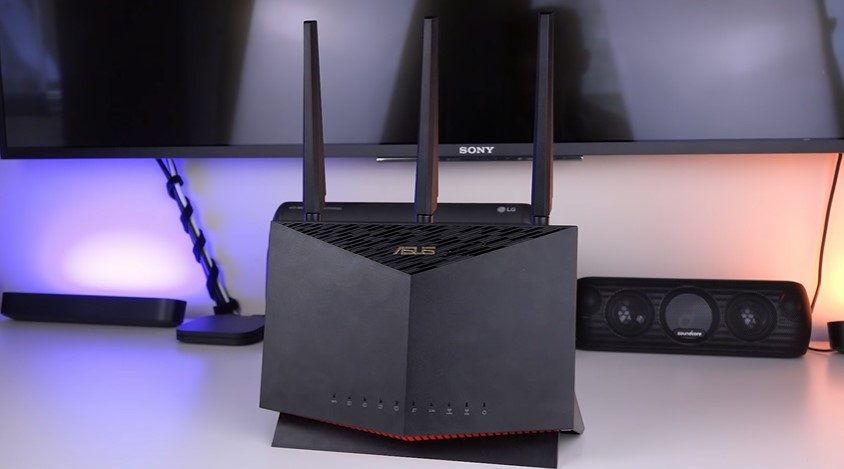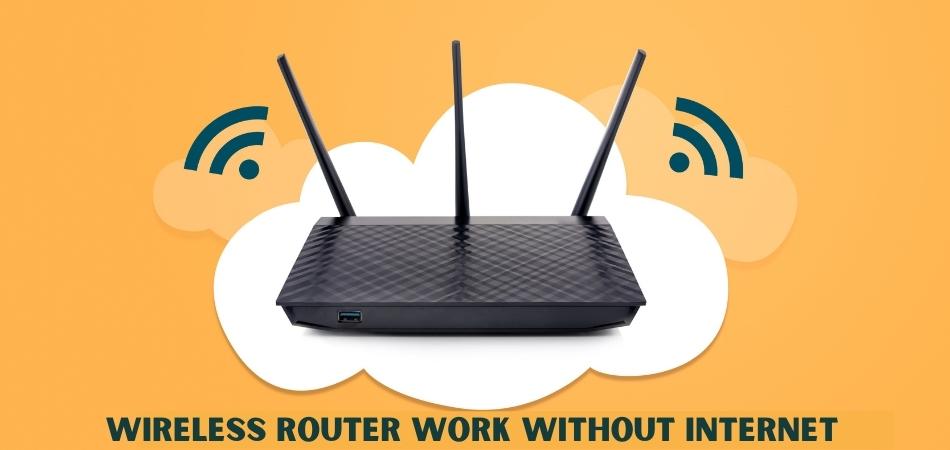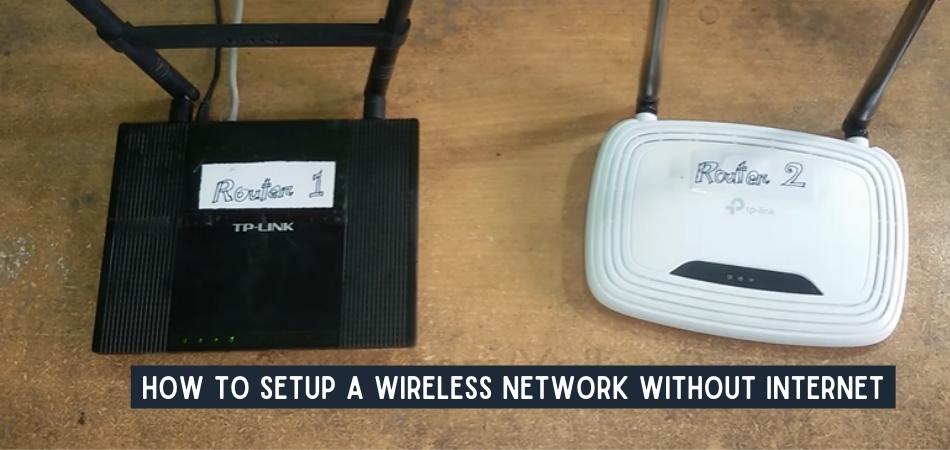Wireless routers have made our lives easier in many ways. We now have access to networks in almost anywhere we go. As all of us know wireless routers work via the internet. But, can a wireless router really work without internet and is it really possible to do that?
Well, it is possible because a wireless router operates without an internet connection and establishes a LAN (Local area network) connection for gadgets to exchange information and folders.
So routers can build a LAN as well as a wireless network for linked devices to converse and exchange files even without an internet connection.
Hence, if you want to know more about how to use a wireless router without the internet, read this article thoroughly, and by the end, we believe you will have proper knowledge about this topic.
Quick Navigation
- A wireless router can work without the internet using LAN
- Setting up a router to work without the internet is different from that with the internet.
- A wireless router eliminates the mess that a wired connection creates
- Find the router IP address correctly to access the login page.
- Ensure to properly configure the DHCP configuration with one address above your router’s IP address to set up the router without the internet.
Benefit Of Wireless Router
A WiFi connection is required for various purposes, and for WIFI, you need a router, which can either be wireless or wired. But, in recent times, wireless routers are becoming more and more popular as they allow devices to connect to the internet and to one another without the necessity of wires or cables.

So, below we will look into a few of the most important benefits of a Wireless router.
Easy Internet Access
A wireless router, unlike a wired router, allows you to access the internet without the use of wires. With the help of a wireless router, you will be able to connect to the internet at any time you want to.
Regular routers can limit the maximum number of connections. On the other hand, wireless routers make numerous connections simple with a single router, which is beneficial because it eliminates the need to exchange passwords with everyone using the connections.
As a result, this permits internet users to have their own link while they’re in the vicinity, and this is particularly true if many people are attempting to join at the same time.
Longer Range
Increasing the range of your WiFi network by adjusting the frequency is a smart strategy. When there are more networks in the same area or zone, the internet range will be hampered.
So, with a wireless router, you will be saved from this trouble. Using a router’s automated network scan feature, people can detect accessible channels anywhere in their home or office.
Easy Maintenance
Hackers can get access to your network by using outdated routers, which have major security weaknesses. Users need to use WIFI connections with proper security protocols to secure their connections.
If you get a warning when connecting to your network, you’ll know there’s a problem with it. It’s critical to pay close attention to alerts and repair your router since it safeguards the data of devices linked to it.
Portable and Convenient
The most important benefit of wireless routers is portability. It allows you to carry your laptops and all other devices from one place to another. When you move, you do not have to worry about your internet connection as you will keep getting perfect connections everywhere you want, all thanks to wireless routers.
Another significant benefit is the convenience, as this type of router eliminates the need for any cables. There is no longer any difficulty with cables when it comes to wireless routers. The connection is now wireless. You can now escape the annoyance that is the mess.
Frequent Upgrades
You surely won’t like to buy new routers now and then, but upgrading your old router is necessary due to the latest updates. But, with a wireless router, this problem becomes solvable.
There are frequent software updates available on wireless routers, which can be downloaded from the product website. Updates depend on router models. So with updates, you will get new features and bug fixes in your router, and as a result, you do not need to buy a new router now and then.
Option To Choose Wireless Protocols
The “b” and “g” protocols are significant since they control the router’s internet connection speed. Streaming films and downloading files are more straightforward with a quicker connection.
Multiple wireless connections, such as 802.11b or 802.11g, are supported by some routers. 802.11b provides 11 Mbps connections, whereas 802.11g provides a fast 54 Mbps connection.
It Can Be Used With A Vpn
VPNs are crucial, as we all know. They aid with the security of your data when using public networks such as those found in restaurants, colleges and other public places.
Personal PCs and mobile devices can also benefit from VPN software. As a result, VPN software is completely supported by wireless routers. Hence, you can be certain that your data will always be secure.
Will A Wireless Router Work Without Internet?
A wireless router can work without the internet. They establish a LAN connection that allows network devices to interact remotely or through cables. Because all linked devices are on the same network, they will be capable of interacting with one another.

So you won’t lose features like document sharing or networked printing even if you lose your internet connection. The World Wide web is essentially a massive system with many devices connecting to it.
As a result, the web is commonly referred to as a WAN, and many MANs and LANs are interconnected to WANs. The wireless router’s LAN is also a part of this WAN. So, it’s simple for a wireless router to operate without an internet connection.
How Will A Wireless Router Work Without An Internet Connection?
When your wireless router doesn’t have access to the internet, it will still allow you to view your files and contents. However, streaming of the content can be somewhat limited (depending on your router model).
So, when all the devices are connected to the same WiFi network, they have the capability to interact with one another even without any internet connection.
Any router works without the internet in the ways we will show you below.
Step 1: Connecting Ethernet cable
The first step is to connect the Ethernet cable to a LAN port in your router (which is usually found on the backside). Follow the image below for reference.
Step 2: Connecting Ethernet to PC
You now need to connect another end of the Ethernet cable to your Laptop or PC. Both devices will work, but make sure they have an Ethernet port.
Step 3: Finding the IP address of the Router
There are a few common IP addresses of routers; however, it can be different for yours. So, to avoid any trouble and to find an IP address, follow these methods. To begin, press the Start button. Then press Enter after typing “cmd” and then “ipconfig.” The command window should look like the screenshot below.
Step 4: Login Screen
We are in the last step of accessing our wireless router. The IP address that you took out from the previous step enter that in any web browser, and you will find the router login page.
Now enter your username and password; you will find them in the box of the router. If you have lost the box, then search the internet with your router model. You will get it. After successfully entering the credentials, you will enter the router’s settings.
Related Reading: Does Having Two Routers Slow Down the Internet?
How To Setup A Wireless Network Without Internet?
It is not that easy to set up a wireless network without the internet. This process is a bit tricky, and you can have trouble setting up a wireless router without proper internet connection.

Hence, to easily set up a wireless network without the Internet, make sure to follow our step-by-step guide below.
Step 1: Power on the Router
The first step is you will need to turn on the wireless router. For turning it on, connect it with a power source and turn it on. After waiting for a few minutes, you will see that the LEDs will light up.
Step 2: Login And Connection
Connect one end of an Ethernet wire to one of the router’s available LAN ports on the rear panel. Connect the opposite end of the cable to the device’s Ethernet port. The majority of routers have four ports. For the internet, there will be one colored or labeled ethernet port. We’ll connect to other colored ports instead of the ethernet port.
Then go to your router’s settings page and seek network settings. You should be able to quickly locate a page that allows you to view DHCP configurations.
Step 3: DHCP Configurations
Go to your router’s settings page to set up the DHCP server. To do so, go to the router’s IP in an internet browser; it will take you to the settings page. Because the router would have its own IP, it must be removed, and you must set a different address.
Create a range of IP addresses for the IP pool. Set it up using the IP address of your router. For instance, if your router’s IP address is 192.168.0.2, we will need to create a range of IP addresses ranging from 192.168.0.3 to 192.168.0.354.
There is no need to configure DNS as it is mostly for internet connection, and here we are setting up a connection without any internet. You’re done after you’ve pressed the apply button.
Step 4: Wireless Settings
After setting DHCP, most current routers set it up. All you have to do now is update the username and password. If your router doesn’t do it for you, you’ll have to do it yourself. Then check the wifi menu to see whether it’s turned on. The WiFi SSID, password, and security protocol may all be changed from the same menu.
To assist in increasing security, we recommend you update both the SSID and password. Make sure to save all of your modifications.
Step 5: Checking the connections
First, we will test all wired devices. To begin, press the Start button. Press Enter after typing “cmd.” Then again press Enter after typing “ipconfig.” You should see that the IP address shown, which is the one allocated by the router to that particular device, is inside the DHCP range you just defined.
Now we will check the wireless devices. You should notice your SSID is listed as accessible. Rep the “ipconfig” command using the same methods as in the Wired device testing approach.
Then assume that your connected device’s IP address is 192.168.0.3. Press the Enter key after clicking the Start button and typing “cmd.” Then type “ping 192.168.0.3” and press Enter.
If you get a response, it means both devices are on the same network and can interact with one other even if they are not connected to the Internet.
Conclusion
To sum up we can say that wireless routers do work without the internet. It can work using both wired and wireless networks, which means all your devices in the same network can stay connected. All the devices will be to interact using LAN even with any internet connection.
If you want to know how to use wireless routers without the internet, then you should have already got your answer by now. Make sure to carefully read all the steps discussed in this guide so you can easily set up your router even without the internet.
